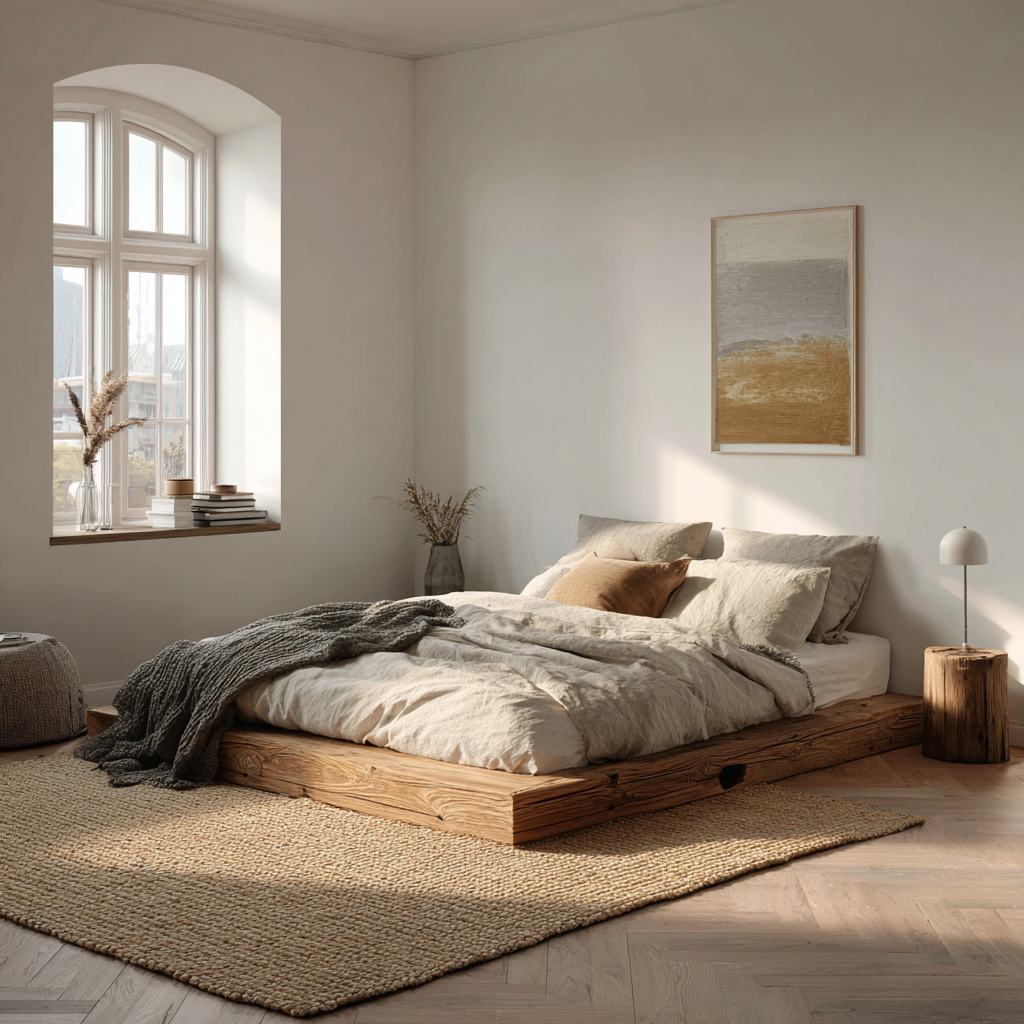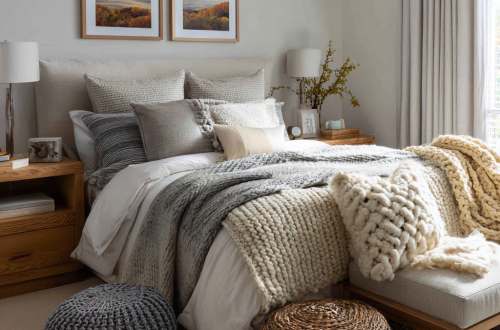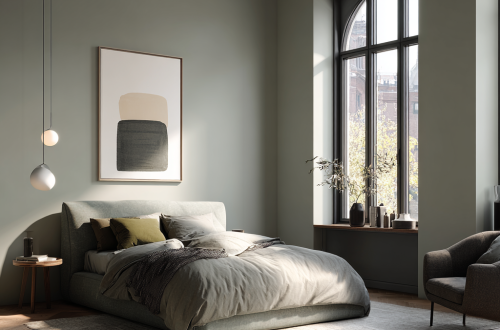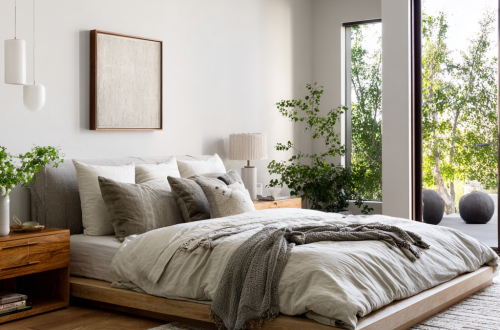11 Minimalist Bedroom Ideas to Create Your Calmest, Coziest Retreat Yet
Hey friend!
If you’ve been staring at your cluttered bedroom thinking, “This space just doesn’t feel restful anymore,” you’re definitely not alone. We spend nearly a third of our lives sleeping—and let’s be real, probably another third doom-scrolling or reading under cozy blankets. So it only makes sense that your bedroom should feel like a sanctuary, not a storage unit with a bed in it.
That’s where minimalism comes in. And no, I don’t mean cold, sterile rooms with zero personality. I’m talking about intentional, warm, and calming spaces that help you recharge without visual chaos.
Whether you’re doing a full-on makeover or just want to declutter, here are 11 minimalist bedroom ideas that’ll inspire you to simplify—and fall in love with your bedroom all over again.
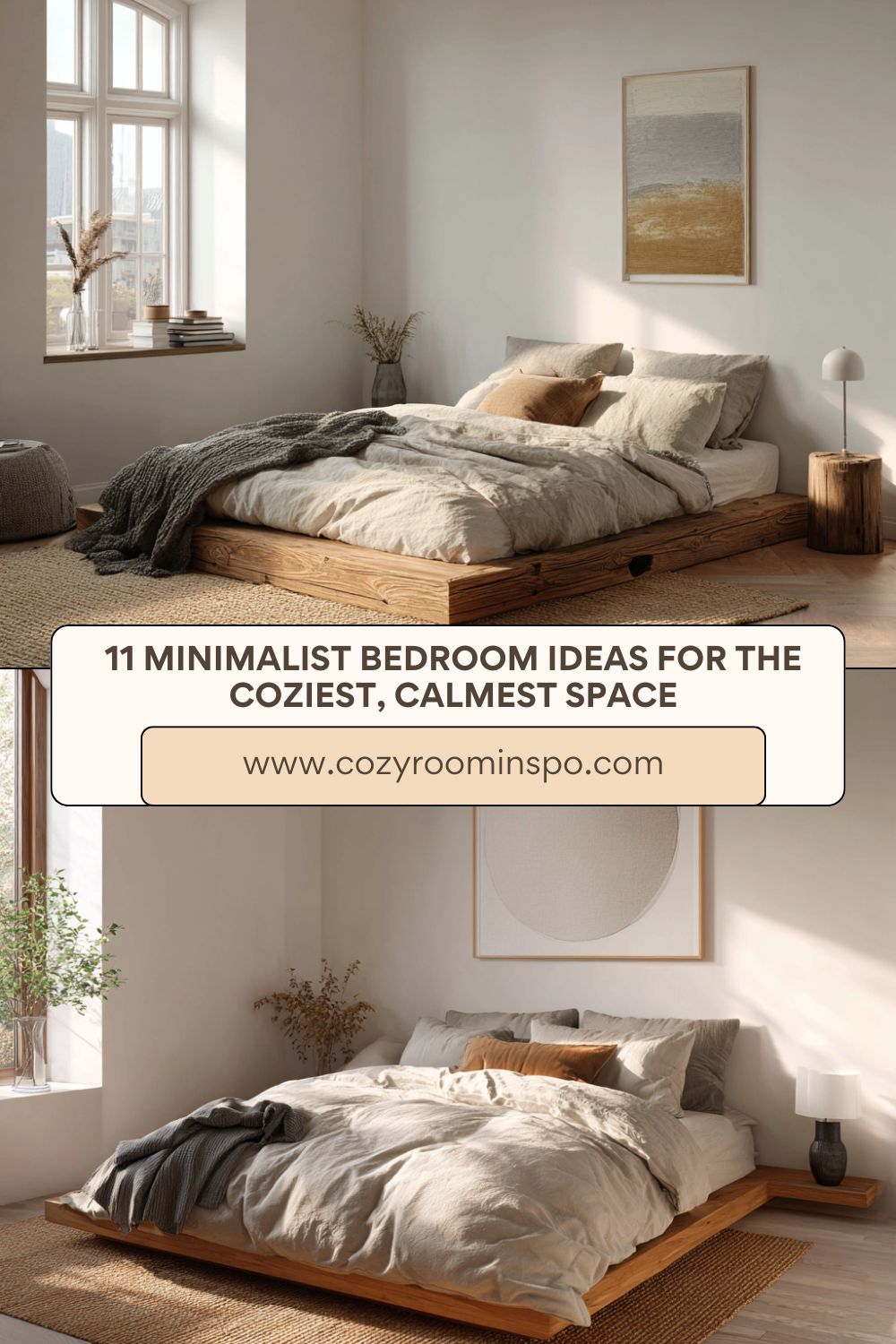
1. Start with a Neutral Color Palette
Let’s kick things off with the power of color.
Minimalist bedrooms thrive on neutral tones like white, cream, soft grays, taupes, and muted earthy hues. These shades don’t just look calming—they feel calming. They also create a clean backdrop that makes the room feel spacious and airy, even if it’s tiny.
Try this:
Paint your walls a soft white or warm beige. Add tonal layers with oatmeal-colored bedding, light wood furniture, and maybe one or two natural accent tones (think sage green or soft terracotta).
Pro tip:
Use different textures in the same color family—linen curtains, wool throws, and jute rugs—to add depth without clutter.
2. Choose Multi-Functional Furniture
If you’re working with a smaller space, or just want to maximize your square footage, multi-functional pieces are your new best friends.
Think beds with storage drawers, nightstands that double as desks, or benches with hidden compartments.
Why it works:
Minimalism is all about function. Every piece should serve a purpose (or two), so you’re not stuffing extra dressers or shelves where they don’t belong.
Try this:
Swap your traditional bed frame for a platform bed with built-in drawers. Or try a wall-mounted folding desk that doubles as a nightstand when you’re not working.
3. Embrace Negative Space
Here’s a secret: Empty space isn’t boring—it’s beautiful. In minimalist design, negative space (aka the space around and between objects) is intentional.
Resist the urge to fill every wall or surface. Instead, let your eyes (and your brain) rest.
Try this:
Leave one wall completely bare. Skip the gallery wall and hang a single, meaningful piece of art instead. Or keep your dresser top free except for a plant and a candle.
Bonus:
This also makes cleaning a breeze. No more dusting a million trinkets!
4. Opt for Clean-Lined Furniture
Minimalist style leans heavily into clean lines and simple silhouettes. That means steering clear of overly ornate furniture with carvings, frills, or bulky frames.
Think Scandinavian or Japanese-inspired styles—low to the ground, functional, and sleek.
Try this:
Replace your oversized headboard with a clean, wooden or upholstered version. If you’re shopping new, look for pieces with straight legs and smooth surfaces. Already have furniture you love? A fresh coat of matte paint in a neutral tone can work wonders.
5. Declutter Like You Mean It
Minimalist bedrooms start with a major declutter.
Open your closet. Peek under your bed. Check that chair that’s become your unofficial laundry mountain. (We’ve all got one.)
Ask yourself:
-
Do I love this?
-
Do I use this?
-
Does it belong in my bedroom?
Try this:
Use the “box method.” Label three boxes: Keep, Donate, Move. Spend one afternoon tackling your nightstands, closet, and visible surfaces. Be ruthless—but also kind to yourself. Minimalism isn’t perfection—it’s intention.
6. Keep Decor Intentional and Simple
Minimalist decor doesn’t mean no decor—it just means less, but better.
Choose 2–3 accent pieces that speak to you. Maybe it’s a ceramic vase, a soft throw blanket, or a framed black-and-white photo. Let these items breathe by giving them space and purpose.
Try this:
Instead of cluttering your dresser with knickknacks, opt for one sculptural piece like a candle holder or an abstract sculpture. Pair it with a low-maintenance plant like a snake plant or pothos.
7. Go Natural with Materials
One of the best ways to add warmth to a minimalist space? Natural textures.
Wood, linen, rattan, wool, stone—these all add organic depth and softness without overwhelming the room.
Try this:
Drape a linen throw over the bed. Swap your lampshade for a woven rattan one. Use wood trays or bowls to corral small items.
Why it works:
Natural materials are grounding. They soften the starkness of minimalist design and create that cozy, lived-in feel we all crave.
8. Choose Lighting with Intention
Lighting can make or break the vibe in any bedroom—especially in a minimalist one where every detail matters.
Instead of relying solely on harsh overhead lights, layer in ambient and task lighting using lamps, sconces, and candles.
Try this:
Add a pair of wall-mounted sconces above your nightstands to free up surface space. Or place a floor lamp in a corner with a warm bulb (think soft white, not bright daylight).
Extra cozy tip:
Put your lights on dimmers. You’ll feel like you’re living in a boutique hotel every night.
9. Let Your Bed Be the Star
In minimalist bedrooms, the bed becomes the main event.
That means making it inviting, cozy, and the visual focus of the room. You don’t need layers and layers of pillows or five different blankets. Stick with a few key pieces: soft sheets, a neutral comforter, and maybe one accent pillow.
Try this:
Go for high-quality white sheets, a textured duvet cover, and a lumbar pillow in a soft contrast color like dusty rose or olive green.
Pro tip:
Tuck in your sheets and fluff those pillows daily. Minimalism thrives on a sense of order and calm.
10. Hide Tech (or Kick It Out Entirely)
I know. This one stings. But trust me—it’s a game changer.
Electronics, blinking lights, and tangled cords? Not very zen. One of the simplest ways to minimalist your space is to hide or remove tech distractions.
Try this:
Use a woven basket to hold charging cords and remotes. Get a cord organizer to keep wires tidy. And if you’re feeling bold, remove the TV from your bedroom entirely and see how it transforms your sleep (and your mornings!).
11. Add Just One Statement Piece
If your room is feeling too minimal or sterile, here’s your permission slip to add one bold element.
Maybe it’s a large piece of art above the bed. A statement pendant light. A dramatic headboard. That one “wow” element can anchor the room and give it personality without overwhelming the clean vibe.
Try this:
Pick one piece with texture, scale, or color contrast—and let it shine. Keep the rest of the room simple so it stands out.
Final Thoughts: Less Stuff, More Peace
Friend, here’s the truth: a minimalist bedroom isn’t about rules—it’s about feeling. It’s the feeling of walking into a room and exhaling. Of not being distracted by clutter, or stressed by mess, or overwhelmed by choices.
When you strip back the unnecessary and focus on what really serves you—your comfort, your rest, your peace—you create a space that nourishes your soul.
Minimalism doesn’t mean your room has to look like a Pinterest showroom. It means it should feel like you. Quiet, cozy, calm. And always, always home.
So take what speaks to you from this list and leave the rest. Start small. Maybe just clear your nightstand today. Paint your walls next month. One step at a time.
Your dream bedroom? It’s closer than you think.
